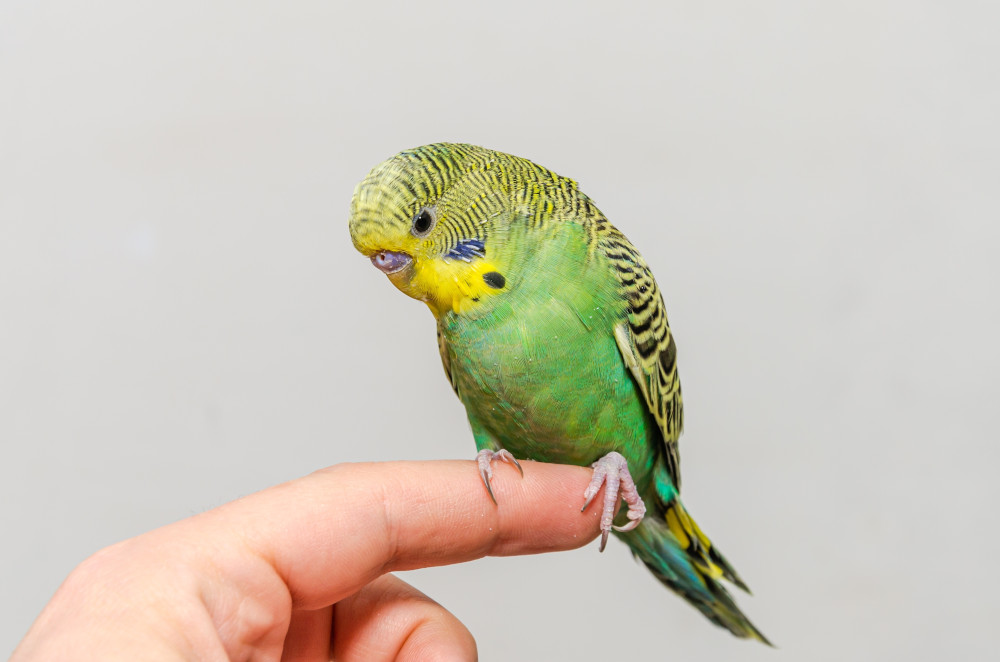How do I bond with my companion bird?

One of the main reasons for having a pet is to bond with them in some fashion. Ideally, birds and owners interact as flock members, but not as mates. When the behaviour of a parrot causes this bond to be severed, the results can be devastating to the owner and the parrot. So, what brings this behaviour into conflict with the owner’s expectations and desires?
Wild parrot behaviour
Many parrots do not have an extensive history of domestication, and so much of the behaviour of companion parrots closely follows that of their wild cousins. Parrots are altricial (i.e., they are hatched with their eyes and ears closed, and with little feathering). They are totally dependent on their parents, not only for food, but also for the development of their behaviours. Following fledging and weaning, parrots continue to learn from their parents and other flock members. They follow the parent parrots around the environment and learn what to fear, what not to fear, what to eat, how to find food, where to sleep, and how to interact with other members of the flock.
Social behaviour varies among the different parrots, but the only parrot that prefers to live alone is the New Zealand Kakapo. All other parrots live in flocks, not just for companionship but also for predator detection and avoidance, access to mates, defence of territories, and foraging efficiency. Within the flock, parrots will preen each other and perch together, but these ‘relationships’ are very fluid, based more on mutual care and benefit rather than sexual interest.
On the other hand, pair bonding, the mutually beneficial relationship between sexually mature female and male parrots, revolves primarily around the cooperative rearing of young. Bonded pairs are characterised by sitting close to each other, feeding each other (allofeeding), preening each other (allopreening), and doing things together e.g., nest building and preparation, territorial defence, etc.
Wild parrots learn these behaviours by observation, mimicking, and as a learned response to their own behaviour. (Very little parrot behaviour is instinctive – most is learned.)
Companion parrots
In captivity, neonatal parrots often are poorly socialised during the hand-feeding process. They are often housed separately in individual brooders (a heated enclosure that provides shelter and warmth for the young parrot) and their only social interaction is when they are fed. Once weaned, many are immediately sold or placed into new homes. The opportunity to learn how to cope with the captive environment, including social interactions, is rarely provided.
A healthy human-avian bond requires each side to behave in a manner that promotes this bond. Necessary components of a well-adjusted and well-behaved pet bird include respect and trust of the owner and other humans, independence, and a platonic bond. As wild animals, parrots have no concept of the human-animal bond and can only interact with human companions as flock members. The owner’s family must take on the role of flock members and guide the development of the chick.
Unfortunately, placement of these parrots into surrogate roles, often with people who have not had the opportunity to learn their role in their companion’s development, can lead to an unhealthy social environment. Cuddles, feather preening, kissing (mimicking allofeeding), and even feeding the parrot out of the human’s mouth – all these behaviours serve to confuse the parrot and guide them in the wrong direction for a healthy human-avian bond.
Playing with a companion bird can provide an effective means of teaching them the necessary skills to live in harmony with people. Structured training or play sessions can allow the owner and their pet to interact in an entertaining but structured manner. The objectives are to teach both behaviours required for companionability and behaviours that assure comfort, health, and happiness. Play should focus on behaviours the animal likes to do and encourage those that are desirable.
Realistically, no one can provide 24-hour interaction with a bird. Interaction with only one person in captivity is contradictory to the psittacine social nature. It is therefore best to avoid having the bird develop a pair bond with any one person. Some birds that develop pair bonds with an owner will tend to be more aggressive towards other people, and sometimes their owner. It is a myth that some species are “one-person birds.” Birds should be encouraged to be accepting of multiple people. If reluctant, out-of-territory interactions such as step up training or outings are recommended.
It is important to teach companion parrots behaviours required for companionability and that assure comfort, health, and happiness; it is cruel and unnatural to let them try to figure things out for themselves.
Exercises
Step Up
One of the basic needs of a pet parrot owner is the ability to transport the parrot upon the hand. For this to occur the parrot must learn to easily step onto the proffered hand. This is where the “step up” command comes into play.
The handler cues the behaviour with the words, “step up” and moves the hand toward the parrot. The hand must be very steady and positioned in a way that it is easy for the parrot to step up on it. The parrot should willingly step up and stay on the proffered hand.
If the parrot is not schooled in this exercise, teaching (using positive reinforcement) will be required. This involves breaking the activity into steps and rewarding your parrot as they successfully complete each step.
- Cue ‘step up’ and offer your parrot a treat (a small piece of its favourite food usually works well). The parrot should lean forward and take the treat.
- Cue the parrot, offer the treat, but this time further away from the parrot with your hand between you and the parrot. As soon as the parrot touches your hand with their foot, offer the reward.
- Repeat the above step but with your hand further away and the reward is given when the parrot steps one foot onto your hand.
- Repeat this again but further away again and the reward comes when both feet are placed on your hand.
As this process is repeated, the parrot learns to step readily onto the hand and, most importantly, it wants to step up to gain a reward.
How long does this take? The average parrot will learn how to step up in 10-15 minutes. Keep the training class short but repeat it frequently so the parrot retains the memory of this acceptable behaviour.
Step down
Just as important to the parrot owner is the ability to get the parrot to step off the hand on cue. The same process described above is repeated, but in reverse. The cue this time is ‘step down’ and the parrot can be taught to either step backwards or forwards onto perch. Teach your parrot in small steps, using a reward so the parrot wants to perform the behaviour for you.
Stay
Staying on a perch is important for a parrot to experience ‘normal’ flock social interaction while outside of their cage with their ‘flock members’, without getting into mischief or requiring constant supervision. The free-roaming pet parrot is at a much greater risk of traumatic injuries and household poisonings. It is also more likely to develop pair bonded interactions with one person, and less likely to interact with other people. Portable table-top perches are suitable for this training since they can be put anywhere. The parrot is stepped down on to the perch and rewarded (verbally or with a food reward) for remaining there. If they climb down and walk around, avoid inadvertently rewarding this behaviour; simply put them back on to the perch without any verbal cue or other reward. If they stay there, offer another reward. It is usually necessary to gradually extend the time between placing the parrot on the perch and offering the reward.
Bibliography
Doneley B (2018) Avian Medicine and Surgery in Practice: Companion and Aviary Birds, 2nd ed. CRC Press
RSPCA Australia believes that captive-bred wild animals should not be kept in a home environment or for companion purposes unless the species has been clearly identified as being suitable for this purpose. It is important that animals living in a home environment can live a good life. This means providing for their physical health and ensuring opportunities to fully express their individual interests and experience good welfare. Inadequate care and husbandry are reported to contribute to common and serious welfare compromises in many captive wild animals living in home environments. For more information see our policy.
The reality is, however, that captive-bred wild animals are kept in home environments despite sometimes not meeting these criteria (e.g., some reptile and bird species). Because of this, the RSPCA has produced these articles on the care and welfare of a variety of commonly kept captive-bred wild animals. The aim is to help people better understand their animals as individuals and provide them with care that keeps them healthy and provides opportunities for positive mental experiences as much as possible in captivity.
Wild animals must not be taken from the wild to be kept as companion animals (pets).
Was this article helpful?
This work is licensed under a Creative Commons Attribution-NonCommercial-NoDerivatives 4.0 International License.



